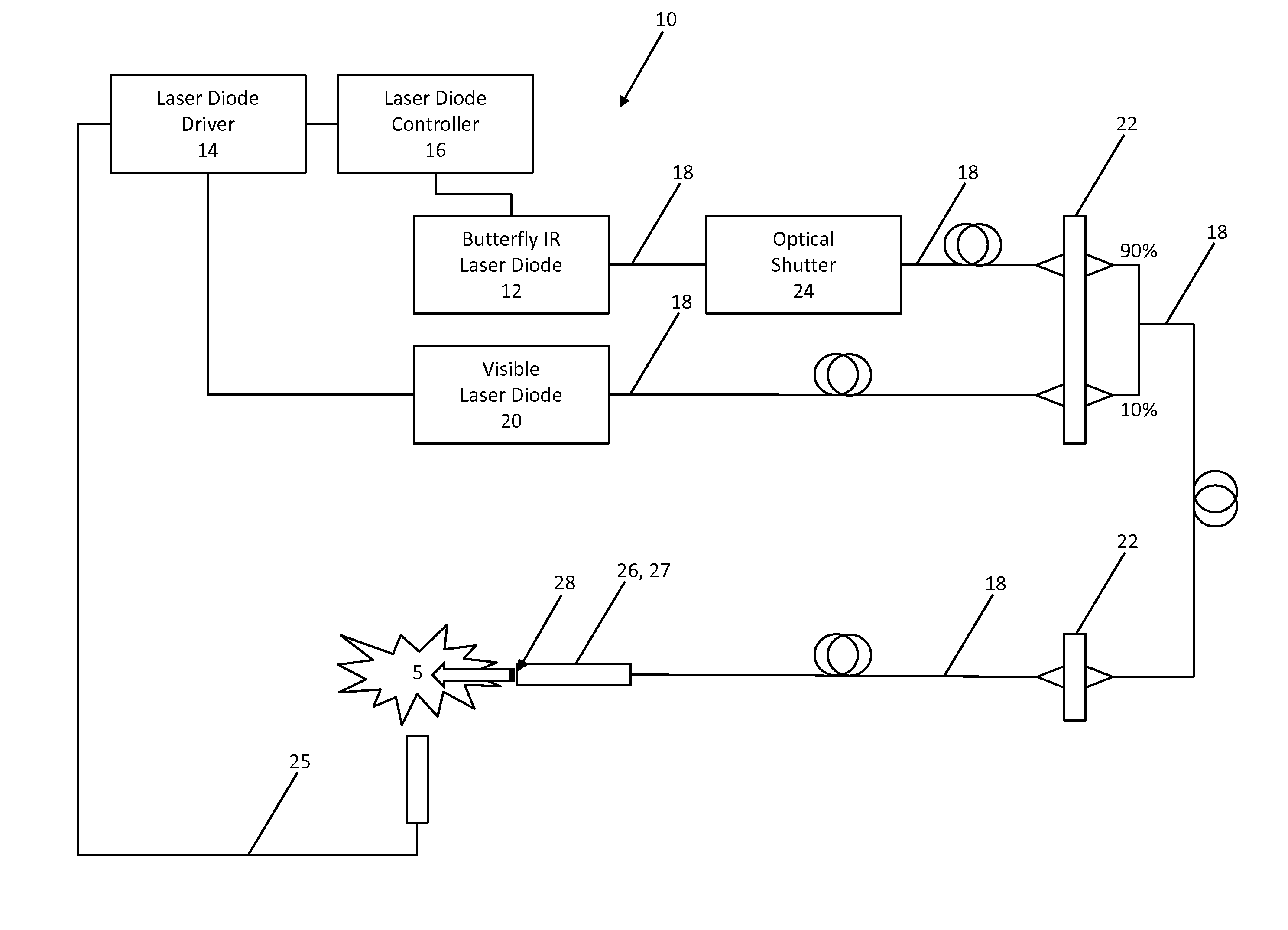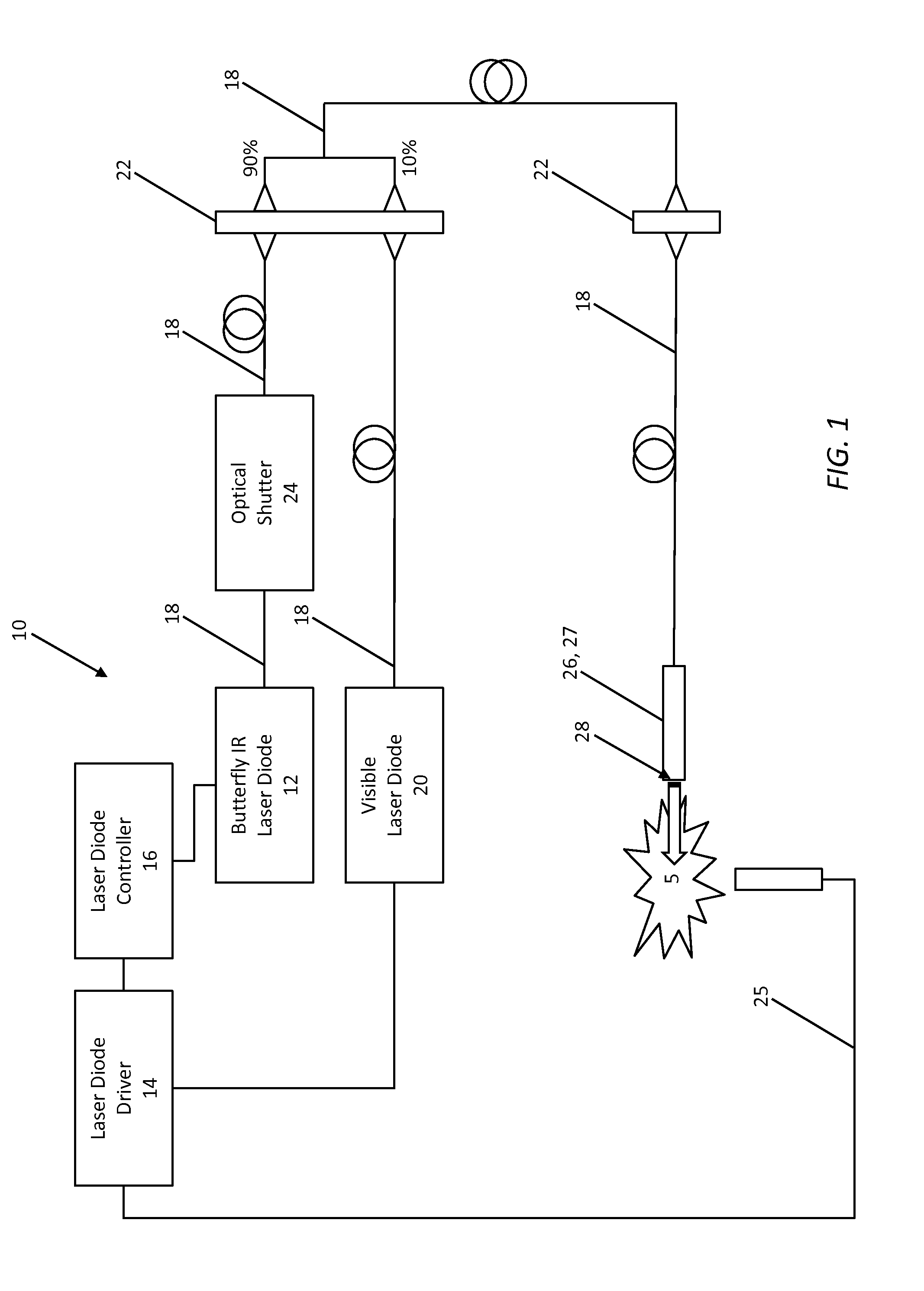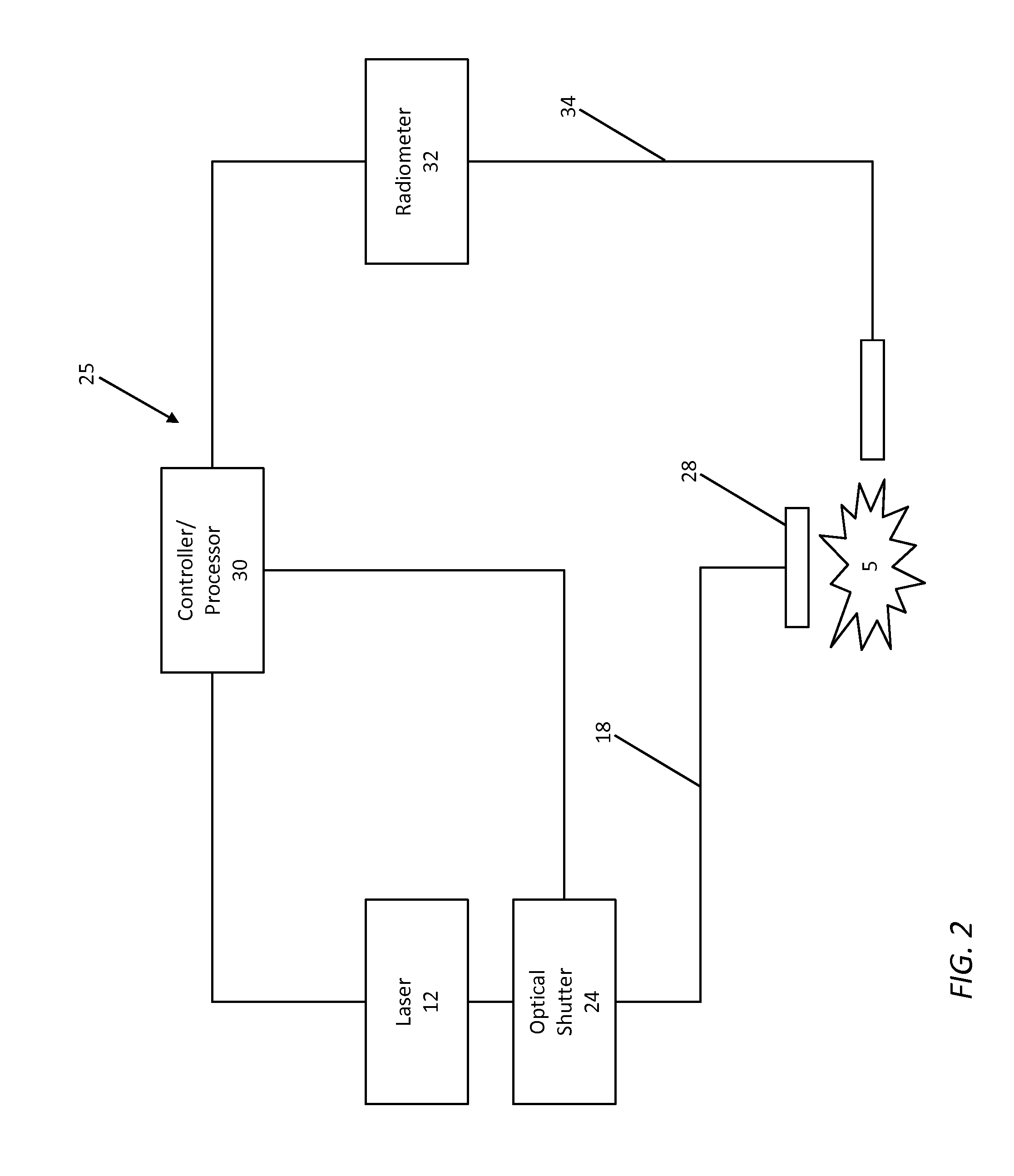Continuous-wave optical stimulation of nerve tissue
a nerve tissue and optical stimulation technology, applied in light therapy, radiation therapy, therapy, etc., can solve the problems of limited knowledge of the risk of injury, and the difficulty in predicting the position and path of the nerve tissue from one patient to another, etc., to achieve the effect of reducing the risk of injury, and improving the quality of li
- Summary
- Abstract
- Description
- Claims
- Application Information
AI Technical Summary
Benefits of technology
Problems solved by technology
Method used
Image
Examples
Embodiment Construction
[0019]Referring to FIG. 1, in one exemplary embodiment of the present invention, the CW ONS system 10 includes an IR or near-IR butterfly laser diode assembly 12 or the like that is coupled to a laser diode driver 14 and a laser diode controller 16. Collectively, the laser diode assembly 12, laser diode driver 14, and laser diode controller 16 are operable for delivering CW laser radiation with a wavelength of about 500-3000 nm, preferably with a wavelength of about 1000-2500 nm, and more preferably with a wavelength of about 1000-2000 nm, and most preferably with a wavelength of about 1400-1900 nm, in the IR or near-IR ranges. The laser diode assembly 12 is coupled to one or more lengths of SMF 18 that is / are used to deliver the laser radiation to the surgical site 5, optionally through one or more optical couplers 22 or the like. The SMF 18 ultimately provides a spot diameter of 0.1-5 mm, for example, and preferably a spot diameter of 0.5-2 mm. A visible aiming laser diode assembl...
PUM
 Login to View More
Login to View More Abstract
Description
Claims
Application Information
 Login to View More
Login to View More - R&D
- Intellectual Property
- Life Sciences
- Materials
- Tech Scout
- Unparalleled Data Quality
- Higher Quality Content
- 60% Fewer Hallucinations
Browse by: Latest US Patents, China's latest patents, Technical Efficacy Thesaurus, Application Domain, Technology Topic, Popular Technical Reports.
© 2025 PatSnap. All rights reserved.Legal|Privacy policy|Modern Slavery Act Transparency Statement|Sitemap|About US| Contact US: help@patsnap.com



